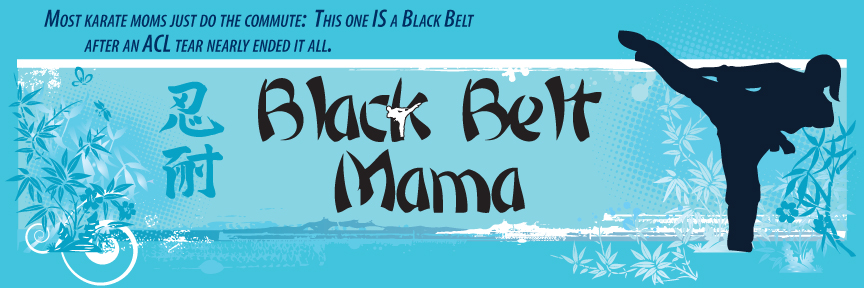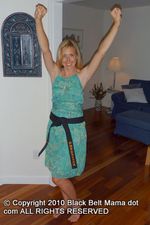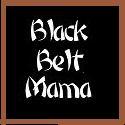March 24, 2008
Our Two “Moms”
By William R. Hayes, Maj., USMC (Ret.)
“Old Student” of Shorin-ryu Karate-do
This is not a piece written with regard to a social dilemma faced by some. Rather, this is an article designed to touch upon a very real challenge experienced by more and more students of traditional martial culture – especially those who have spent considerable time in their training halls.
At the outset – for the sake of clarity – let me define the “TWO ‘MOMS’” mentioned in the title. “MOM #1” – the first (and sometimes only) “MOM” we meet in the dojo, stands for “Mastery Of Motion” and encourages the development of what might be called “Martial Science”. As for “MOM #2” – well, that “MOM” stands for “Meaning Of Motion” – and is seen less and less in dojos these days even though the presence of “MOM #2” can provide the effective “Martial Arts” we seek in the first place.
For the sake of discussion, let’s say a prospective student drops by a dojo and observes a class before seeking admission or being asked to enroll. What that person gets to see may well be martial arts displayed by experienced practitioners, however, what he or she undoubtedly gets to do, for at least the first several years of training, will be something completely different – martial science.
Let me start with the first MOM – Mastery Of Motion – “martial science”. That term includes what we are told to do and what we actually perform in a dojo over an extended length of time (sadly, in some cases, for the entire length of time we study a particular ryu-ha). “Martial science” involves stretching, calisthenics, breathing, stance work, striking, kicking, “blocking”, drills, kata, fixed bunkai, kumite, and other assorted methods and routines designed to bring us to the point where we are judged worthy of moving up in a system’s hierarchy. In other words, “martial science” training primarily describes and involves body mechanics – the kinesiology we undertake during our studies.
During “martial science” training we are exhorted to “polish” our movements for the sake of precision, snap, power, martial spirit development, style, competition, tradition, and so forth. Operating within and exemplifying that model is fine as long as we are, at some point, introduced to the other MOM – MOM #2 (Meaning Of Motion). MOM #2 is quite a bit older than MOM #1, and is a bit more complex and difficult to come to know, however, MOM #2 is truly worth meeting. If the meeting is delayed too long due to a comfort zone-created fascination with MOM #1, a misunderstanding of the original intent of the art – or – worse yet – never takes place at all due to either the limitations of the instructor, the style, or the organization propagating the style, then the practitioner may never reach full potential – and, perhaps more importantly, may not possess true self-defense or Life Protection skills should that never-hoped-for “moment of truth” ever arrive.
MOM #2 (Meaning Of Motion) is the comprehensive enabling factor which gives vitality and utility to MOM #1. When utilized in conjunction with a system’s concepts and principles MOM #2 leverages our basics, our kata, and even the seemingly street-impractical analysis (bunkai and yakusoku) we are taught during the various martial science stages of our training. MOM #2 moves us from the study of “martial science”, where the goal is to become “Brilliant At The Basics”, to an understanding of the processes that comprise “martial arts”, where the dedicated develop Intuitive Competence; where rational creativity is fully unleashed; where practitioners are not separate from their martial culture; where they master themselves, their opponents, “the moment”, and their arts through the unified, simultaneous acts of understanding and doing.
The transition from “martial science” to “martial arts” begins with ones mindset – how one is “fed” and “sees” ones art and its many component parts. Take the fundamental “middle block” learned early on during “martial science” training. “Martial science” training leads us to believe that the end of that motion (the fully formed “block”) expresses the full function of that motion. We “perfect” the “blocking” motion with repetitive drills which allow us to know ahead of time that a particular punch is on its way and that we must block it (and possibly counter it in some way). Partners eventually gain the ability to do all of that by employing well-timed choreography and safe stances, making it almost impossible to injure one another in the process. With “martial arts” we learn that a great deal more is going on when it comes to the movements involved in the “middle block” beginning with the fact that the timing and functions of the motions involved are not what they seem to be at all.
With “martial science” the object of the “middle block” is to indeed block the opponent’s punching arm in such a manner as to keep it from striking you – for many this exercise then becomes a well-oiled speed drill on the part of the “blocker” wherein mere anticipation arises as the hallmark of “successful” blocking. With enough anticipation and a slightly cooperative training partner some build great confidence in their supposed ability to “block” an attacker’s punch. Such drills can evolve to the point where the “blocking” arm is in action before the cue (the moving punching arm), is given (we’ve all seen it happen and perhaps done it ourselves). That’s a sure way to build great false confidence in our budding abilities, especially when we keep in mind that, by it’s very nature, a reaction cannot occur before an action takes place. Allowing just such a contradiction to not only occur but embed itself in our training as a “fundamental skill” is one of the ways in which “martial science” moves us further and further away from the real world of Life Protection (but closer and closer to MOM #1).
MOM #2, on the other hand, takes a different view of and approach to the notions of “timing”, “attacking hands”, “middle blocks”, and so on. Using “martial arts” perspectives/mindsets/training we learn to “cover and change body” (protecting and altering the angle of our body) in such a manner as to make a “block” both inefficient and unnecessary. With the MOM#2 approach one varies: heights, distances, angles, stances, and timing, (the five fundamental elements of movement) so as to place the defender’s body in the least vulnerable position while exposing kyusho mato (vital points) on the attacker’s body. With “martial arts” we learn to respond instantly to the psychological, physiological, and physical cues the attacker gives us prior to or just as their attack gets under way, allowing us a bit more time to reposition ourselves, redirect (not block) the attacking hand with our “front side motion” (the other hand usually not very involved in blocking drills), and counterstrike or manipulate a joint with the “back side motion” (what would have been the blocking hand in the “martial science” model) to a meridian, nerve plexus, ligament, or other target – all done near simultaneously, thereby overwhelming the opponent’s ability to deal with the situation he or she created by attacking in the first place. The Okinawa Ko Hoshin (Old Okinawan Principle) of Ti Chi Ki (What the Hand is Doing) is what is employed here by the Life Protection practitioner and it amounts to a decision cycle akin to the “O.O.D.A. Loop” (Observation, Orientation, Decision, Action) made famous by a now deceased U. S. Air Force fighter pilot named John Boyd.
A great deal changes when we get to know both of our “MOMS” – especially MOM #2. On the way to practicing and applying the processes which constitute MOM #2 we may be beset by periods of confusion – sticking points in our training during which we get to “rewire” our brains. Okinawan masters remind us that such confusion is intentional – it is part of the way ahead. For instance, take a moment to consider the habit of breathing in on a “block”. With a martial arts Life Protection mindset in operation one might breath out on that same movement since it may now be a strike and not a “block”.
Meeting, training, understanding, and integrating MOM #2 can be a martial culture-altering experience which brings us to understand why the Uchinajin no Bushi – the great warriors of the Ryukyu Islands – took extraordinary care and invested extensive amounts of time in an effort to develop and gift us with what is now our heritage.
Lastly, understanding the differences as well as the links between “martial science” and “martial arts” can allow practitioners to make personal sense of the last two lines from Robert Frost’s wonderful poem, “The Road Not Taken” – –
I took the one less traveled by,
And that has made all the difference.
With high regard for your many achievements,
Bill Hayes
Bill Hayes has written an award-winning book titled, “My Journey With the Grandmaster”; publishes a quarterly martial culture newsletter; is a “warrior wellness” product consultant; and conducts seminars in the U. S. and Europe. You can contact him regarding any of the above by writing to him at: 1105 Walker Drive, Fredericksburg, Virginia, 22401-2625; or by e-mailing him at: oldstudent1 at cox dot net.
***This is the final week to enter The BBM Review contest to win exciting books and DVDs from Turtle Press. Please visit The BBM Review and leave a comment on any post in the month of March for your chance to win! One of the giveaway books has just been reviewed! Don’t miss it!
























I see a lot of over-cooperation during block-and-strike drills, occasionally among black belts. I agree that this can lead to false confidence.
As stated, blocking for its own sake is a waste of time. In Isshinryu we’re taught to regard the block as a strike, which blurs the distinction between attack and defense (kobo itchi).
Hey BBM! Saw you mentioned over at Karl’s blog and wanted to stop in and say hello. Hope you’ve been doing well! 🙂